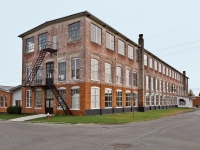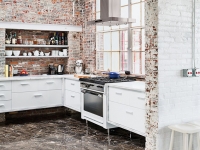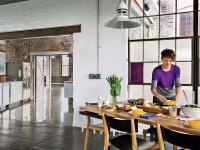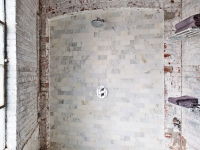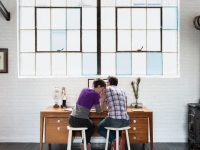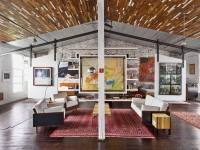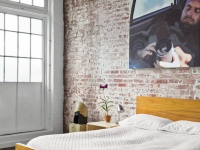We bought a whole factory!
Amy and Brandon are the owners of a huge 19th century factory building in New York County. They have settled here their own home and workplace as well, the place where the Miles & May Furniture Works’s works are going. With a lot of work, creativity they converted the factory into a modern and 21st century space, which respectfully commemorates the history as well.
The three-storey building’s first floor is occupied by the workshop and showroom, on the second floor is located the couple’s home together with the print shop. The third floor is still intact and waits its further function.
The loft part of the factory is determined by the interesting structure, which is almost everywhere covered with painted pine floor and is limited by worn brick walls and huge metal framed windows. Immediately after the entrance door we get into the kitchen, in which glossy, chocolate brown cubes are covering the floor, by the way they bought the raw materials from shoestring. The built-in cupboard is originating from an even older residence and the tarnished Garland stove in turn was purchased as second hand on the internet.
The living room can be reached through the kitchen and occupies a large part of the loft. In one of the corners there is the dining room, which consists of own-made furniture. In the other corner behind a sliding door there is the bathroom, the metal structured sliding door has been saved and recycled from the edge of a seaside promenade. The other accessories as well are hiding in themselves very original ideas: the cabinets are made up of electrical boxes, while train luggage racks serve as a towel holder.
The remainder part of the living room is divided according to the different work phases. The wood ceiling’s pieces in olden times served as parquets in a Michigan factory. A big wall separates the private and working areas, this part was designed from salvaged industrial beams. In the whole area they managed to develop such an atmosphere from authentic, recycled elements, which could be envied by the most museums that present industrial past.
